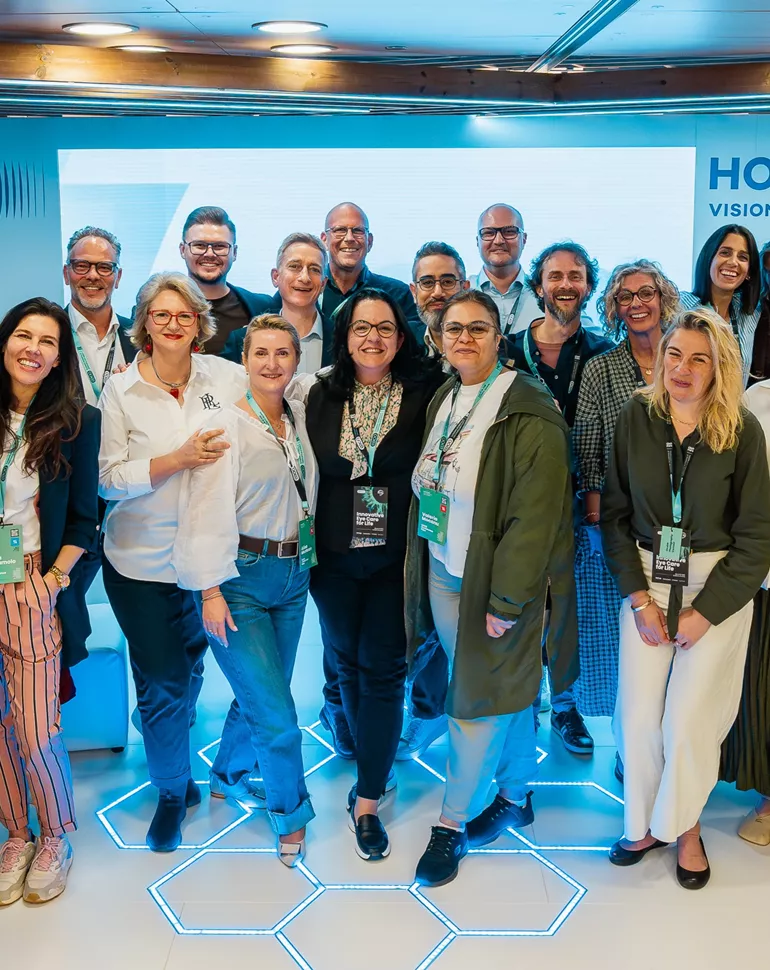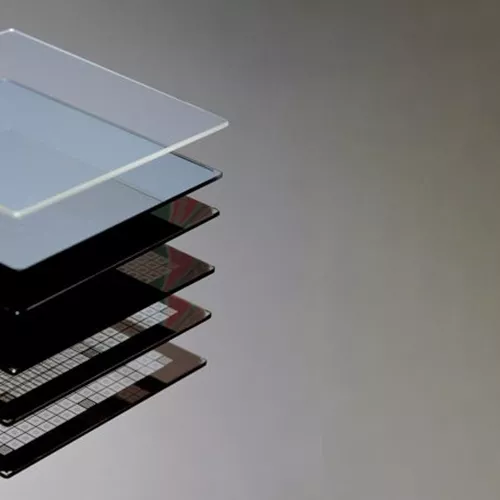- The longest-running clinical study on myopia management spectacle lenses reinforces effectiveness of Defocus Incorporated Multiple Segments (D.I.M.S.) Technology in significantly reducing myopia progression and axial elongation over eight years.[i]
- Two-year observational study in European children finds that DIMS spectacle lenses effectively slowed myopia progression.[ii]
- Study concludes that myopia progression varies depending on astigmatism type.[iii]
- Unveiling of the visuReal MoveAI Kids module, HOYA’s latest innovation designed for children, enabling high accuracy for MiYOSMART spectacle lens centration.
23th May 2025 – HOYA Vision Care, a global leader in eye care technology, today presented its latest clinical evidence at the 16th Annual European Academy of Optometry and Optics (EAOO) Conference in Ljubljana, Slovenia. This evidence was shared as part of the company’s 2025 scientific campaign: Exploring New Frontiers in Myopia Management with MiYOSMART*, with new clinical evidence supporting the company’s Defocus Incorporated Multiple Segments (D.I.M.S.) Technology. The company also unveiled its new visuReal MoveAI Kids Module, an AI-powered video centration system for fitting children's eyewear, highlighting its commitment to enabling children to lead fuller lives through optimal vision care.
HOYA Vision Care shared several updates from ongoing research in myopia management, including eight-year results from the longest-running clinical study on myopia management spectacle lenses. These latest findings demonstrate that wearing MiYOSMART spectacle lenses continuously and for the long-term provides an effective, safe, non-invasive myopia control strategy in children, with maximum benefits achieved through continuous wear.
A two-year observational study of 103 European children aged 5–15 years2 indicated that DIMS spectacle lenses are similarly effective in slowing myopia progression in both UK and Hong Kong pediatric populations when comparing the results with existing data.[iv] In UK children wearing DIMS spectacle lenses there was an average change in axial length growth of 0.17±0.19mm and 0.12±0.13mm after one and two years of wear, respectively.
A separate study concluded that myopia progression could be variable depending on the types of astigmatism in children wearing DIMS spectacle lenses. The study of 184 children (79 Asian and 105 European) found that astigmatic myopic patients had higher myopia, but patients in the spherical group experienced faster myopic progression.3
“The evidence for long-term continuous DIMS spectacle lens wear and the 2-year observational study in a European population demonstrate MiYOSMART’s effectiveness in slowing myopia progression. Combined with our insights into how different astigmatism types can influence myopia management outcomes, this research highlights HOYA Vision Care’s leadership in advancing the understanding of myopia, our continuous innovation in delivering effective solutions globally, and our commitment to paving the way for tailored treatments in children’s eye health worldwide," said Dr Natalia Vlasak, Global Head of Medical and Scientific Affairs at HOYA Vision Care.
HOYA Vision Care unveiled their visuReal MoveAI Kids module at EAOO 2025, marking the global debut of its video centration module specifically designed for children. visuReal MoveAI is a flexible, accurate, and user-friendly portable digital centration solution. With its integrated application, intuitive interface and AI-powered automated detection, visuReal MoveAI makes lens centration fast and easy.[v] The latest addition of the Kids module further supports proper centration of MiYOSMART* spectacle lenses with well-fitted frames to enable effective treatment performance.
“The launch of our specifically-tailored Kids module for visuReal MoveAI reinforces HOYA Vision Care's dedication to superior vision care for children,” said Félix España, Global Instruments Director at HOYA Vision Care. “Optimal spectacle lens centration is especially crucial for myopia management treatment spectacle lenses such as MiYOSMART to ensure the best treatment outcomes for these young patients. We continuously strive to expand the frontiers of vision care by integrating our deep knowledge of global eye care needs and utilizing innovative technology such as AI into HOYA Vision Care’s solutions.”


